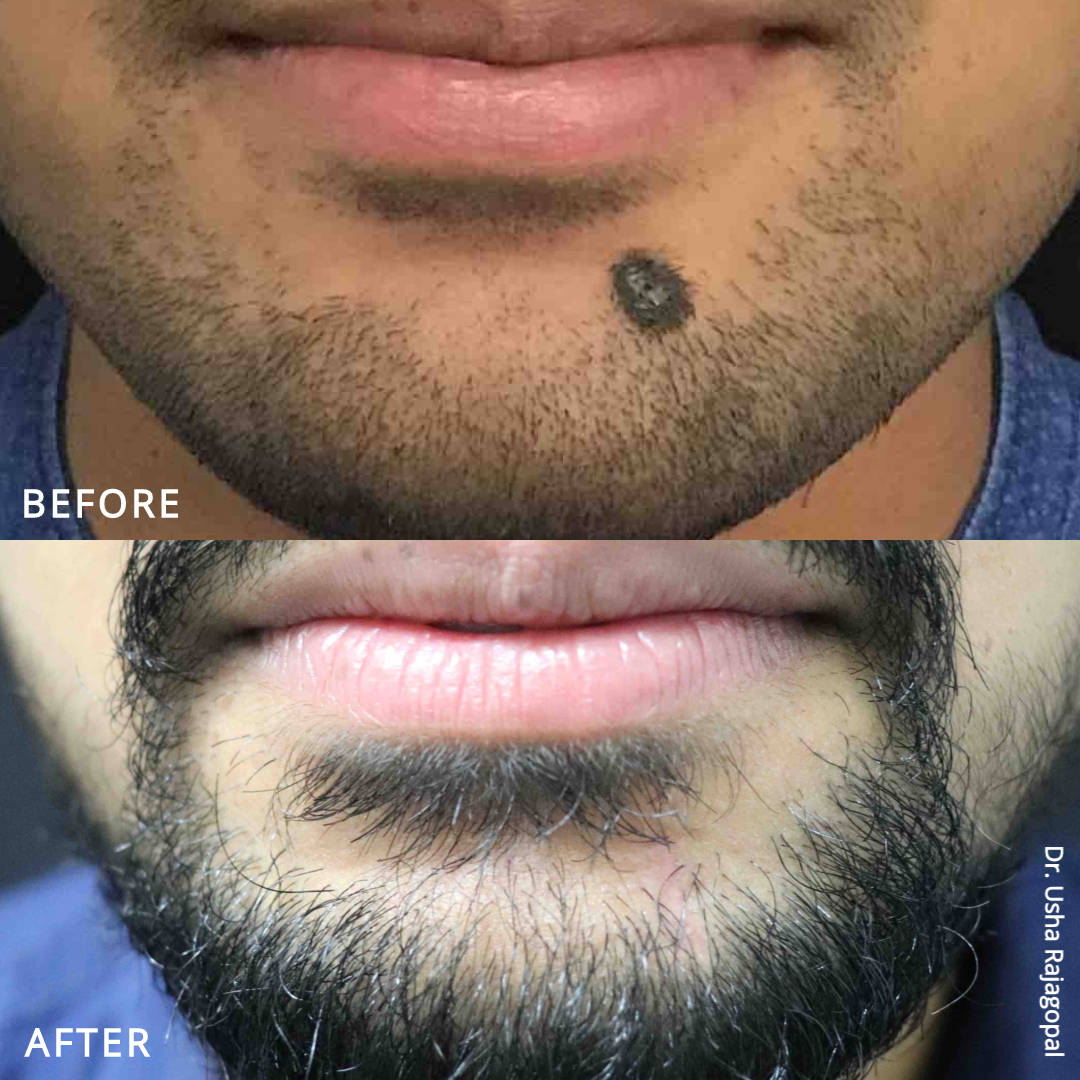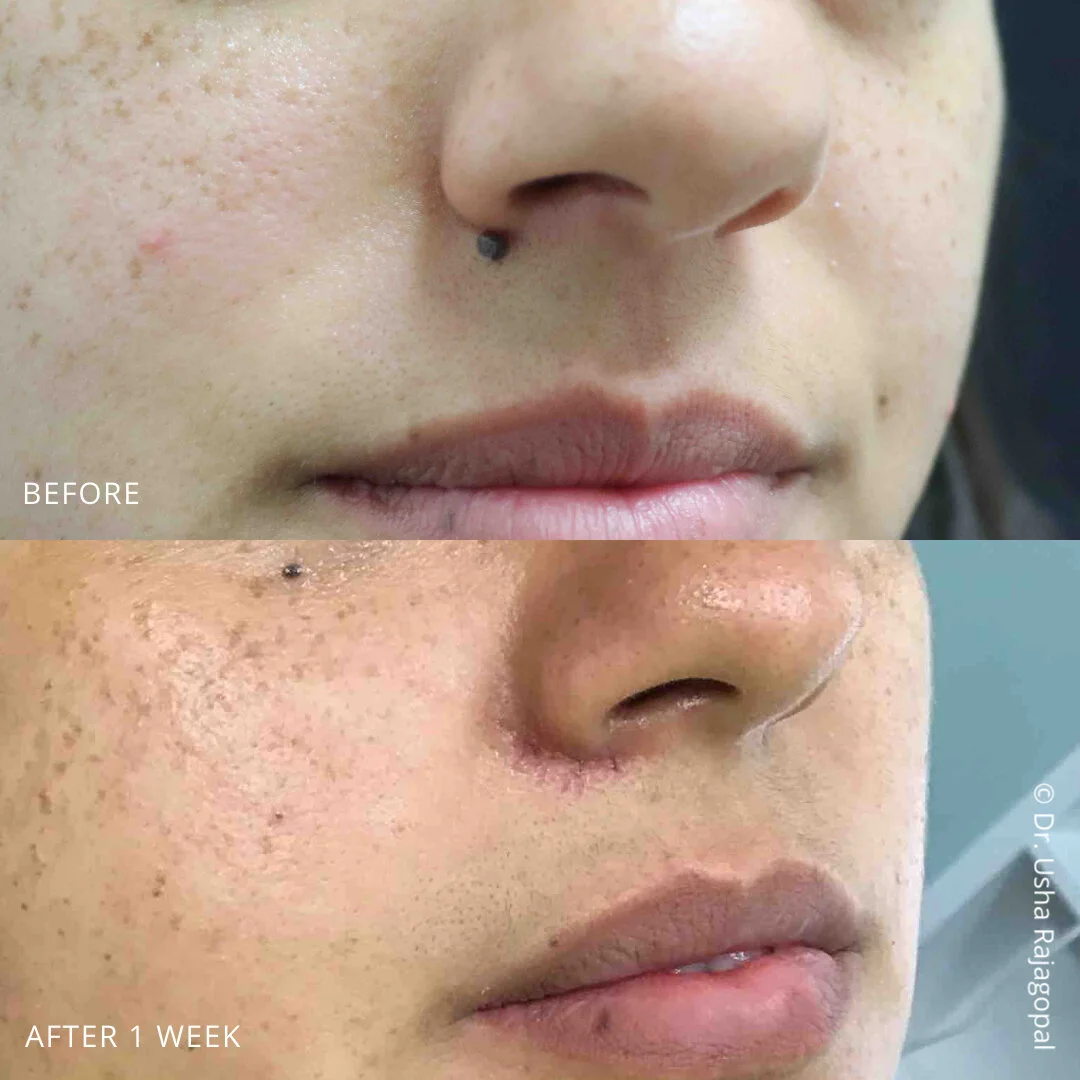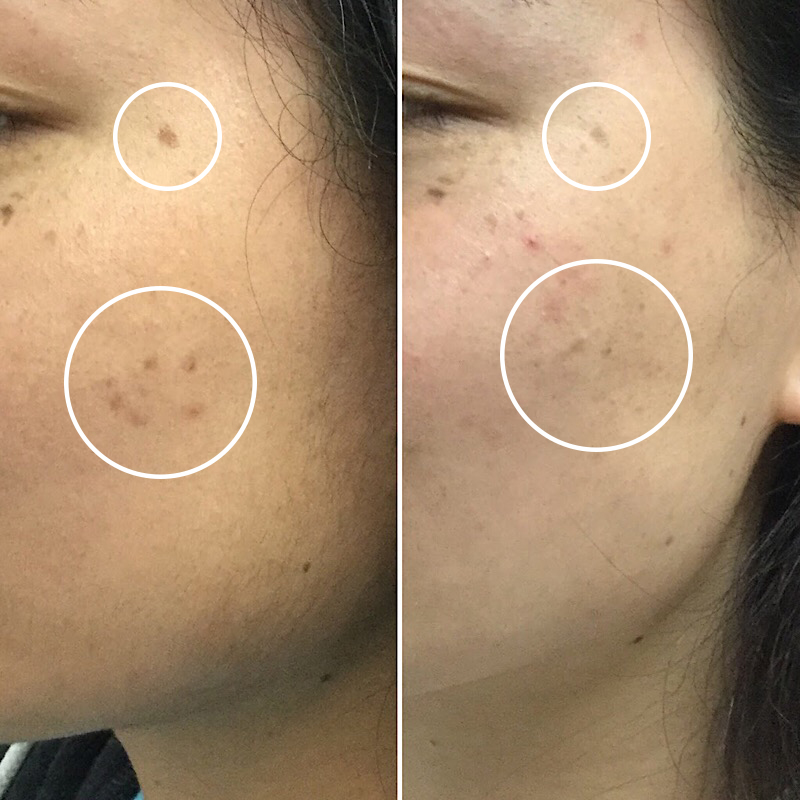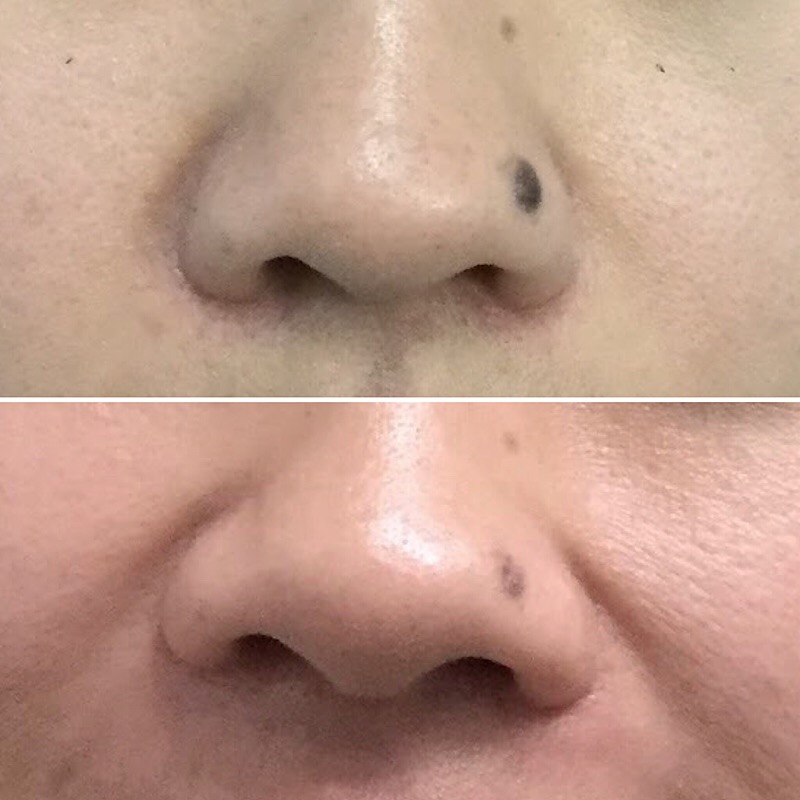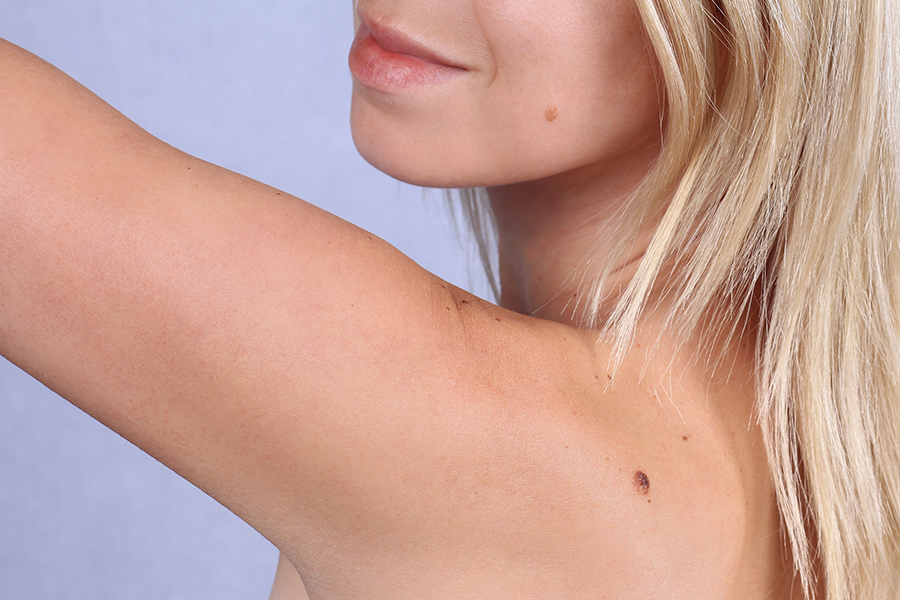
Mole Removal
The best method for mole removal depends on different characteristics of the mole including size, shape, and color. With most moles (pigmented areas) we are either born with them, or they appear over time as we exose our skin to the sun. For flat moles, skin tags, or protruding moles that have been relatively stable since birth (with no rapid growing, shape changing, etc.) treatment with laser or excision can remove them easily. Other moles that have changed in color or contour should be removed for biopsy to determine if they are associated with skin cancer.
Watch Dr. Rajagopal perform a mole removal via excision:
*Disclaimer: Results are not guaranteed and may vary from person to person.
Different Types of Moles and Their Characteristics:
Skin Tags: Small skin growths that may have a small narrow stalk. They are usually skin colored or occasionally darker in color, and usually painless.
Raised Moles: These can be a variety of colors and run deeper than flat moles.
Flat Moles: Any dark spot or irregularity in the skin.
Treatment Methods for Mole Removal:
Laser: Usually used for pigmented nevi (flat moles that are brown/black in color). This method of removal may require repeated treatments (approximately 1-3) before the mole is gone. Light from the laser usually does not penetrate deeply enough to use this method on raised moles.
Excision (cutting) with sutures: Some moles may require excision for complete and permanent removal. This is usually a single treatment and is usually used for protruding moles.
Shaving: A combination treatment that uses electrocautery and shaving to reduce the appearance of protruding moles. Mole shaving does not remove the root of the mole, so there is no excision scar, however there is a chance it will grow back over time. This procedure is most commonly used on protruding moles in areas that do not heal well with excision (nose).
Electrocautery: Usually used for removing skin tags, or seborrheia keritosis. It is a procedure that uses heat to burn the mole off, reaching only the superficial layers of the skin (so scarring is not a problem). Multiple treatments may be needed (approximately 1-3)
Mole Removal Photos Before and After
Mole Removal (Excision) Results Post 1 Week + Post 1 Year
Disclaimer: Results are not guaranteed and may vary from person to person.
WHAT IS THE RECOVERY AFTER MOLE REMOVAL?
Laser:
The treated moles will appear red for a few days and then the spot will scar over and eventually fall off. It is important to let the scab fall off naturally, do not pick at it.
We advise not using Retin-A, salicylic acid, glycolic acid, facial scrubs or other harsh skin care products for 1 week
No heated workout for 24 hours
Use sunscreen daily
Excision (cutting) with sutures:
We will apply steri-strips over the incision after the procedure, we recommend keeping the steri-strip on for 2-3 weeks to help the incision heal. The sutures will typically dissolve over time. On occasion, you may need to return after one week to have them removed
Use scar care treatment for up to 6 months, as needed. We recommend Biodermis
Keep the area dry for 24 hours
No working out for 48 hours
After the first three weeks, use sunscreen daily, paying special attention to the incision site.
Shaving / Electrocautery:
The area will be covered with a band aid following the procedure, keep the area dry for 24 hours
After the first 24 hours, you can wash normally with a mild face wash and apply a Vaseline to keep the area moist for a few days
We recommend to exercise for 24 hours
Use sunscreen daily
If you have any questions regarding Mole Removal, or wish to schedule a consultation with Dr. Rajagopal, please call the San Francisco Plastic Surgery & Laser Center at 415-392-3333.
